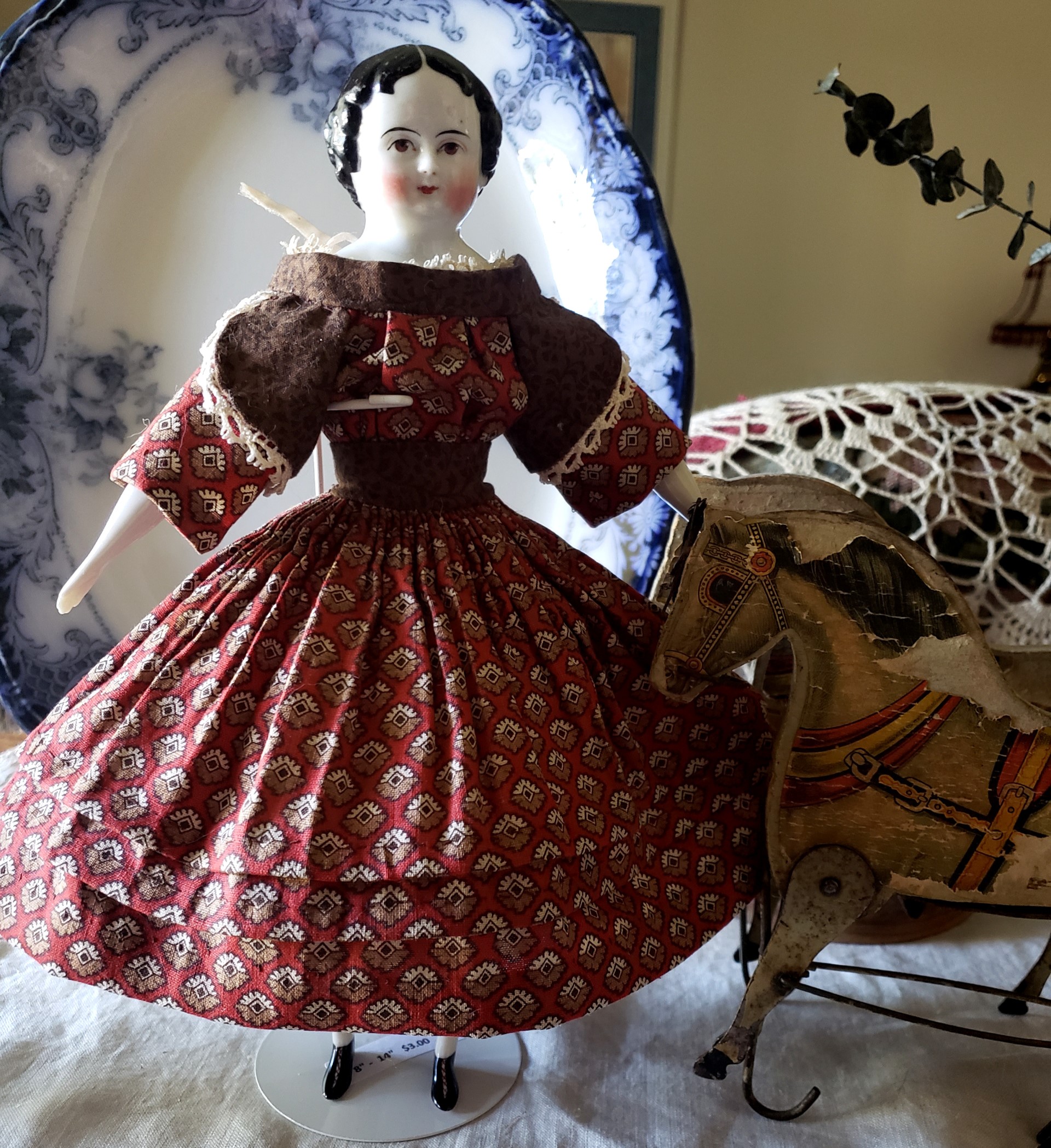
Can sewing be an art form? As with a painter’s brush poised above a blank canvas, a sculptor’s chisel above the marble, or a songwriter’s ear to guitar strings and words, a tailor or seamstress’ shears hover at the edge of the fabric, the threaded needle ready to take flight. WIll what is created be beautiful or ugly? Whether painter, sculptor, musician, or textile artist, at least a part of that determination is a reverence for the materials.
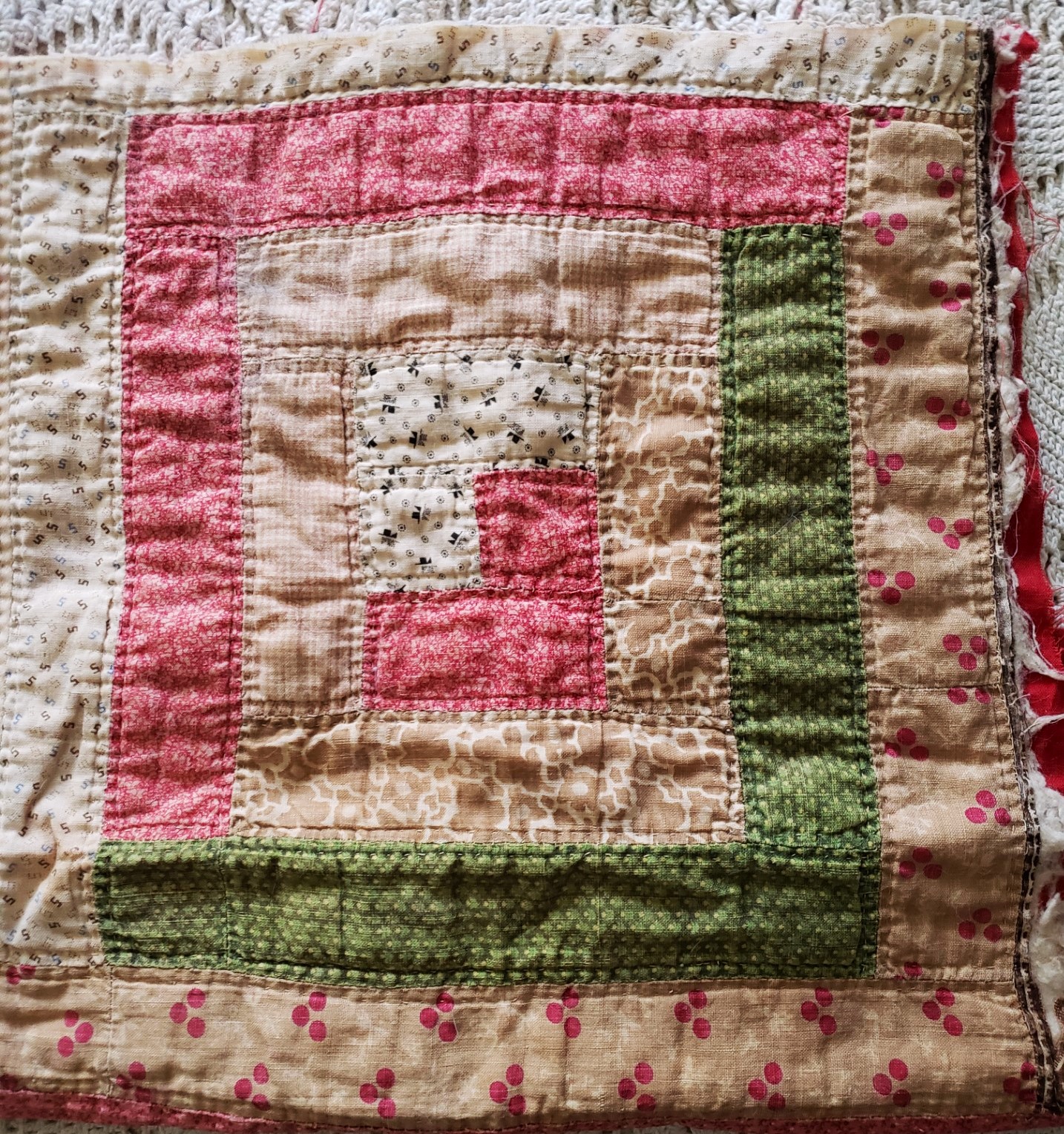
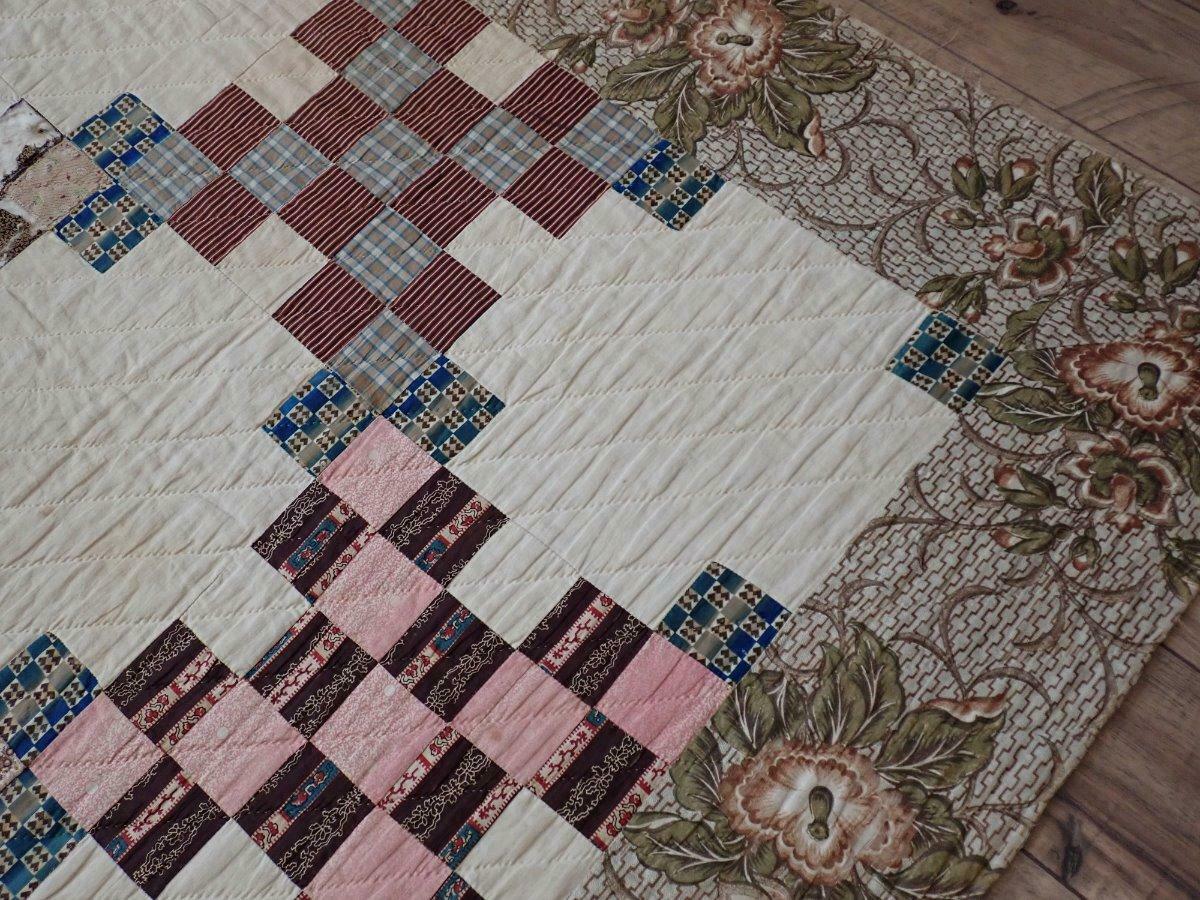
I just adore old cotton print fabrics, and especially those of the 19th century, or earlier when I can find them. I keep an eye out for small prints that will work for doll items. Much of what is available in 19th century small cotton prints now comes from cutter quilt pieces, such as border strips that have been picked apart. When I find old remnants of clothing, baby whites, or cutter quilts, it often takes a judgement call or soulful decision to determine whether the piece ought to be preserved or can be repurposed into a new textile piece. Reverence for the previous life of the textile is a necessity in handling the piece, and for artfully re-imagining its purpose.
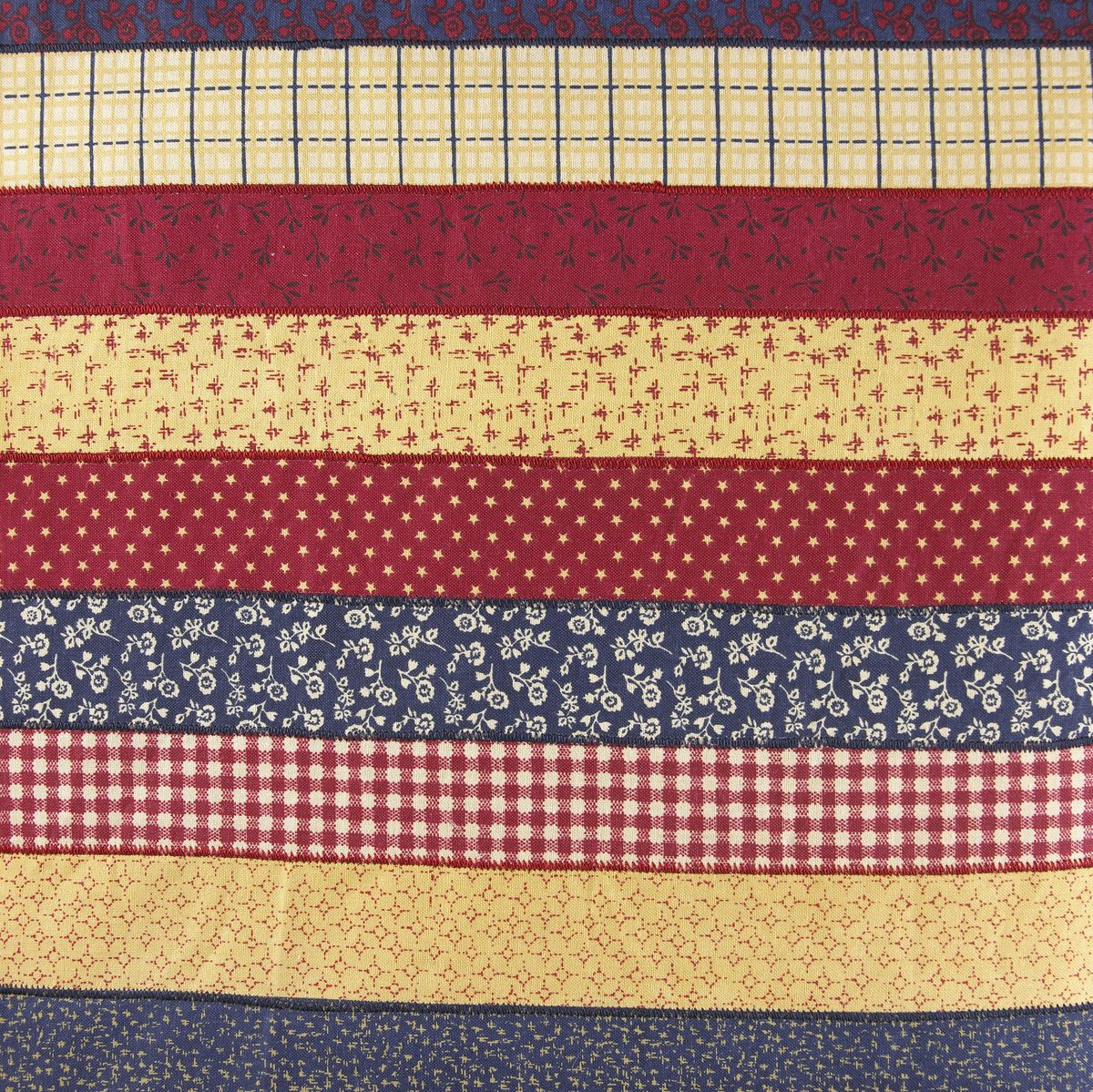
Calico, a cheaply made cotton fabric, has been around since at least the 12th century. Heavier than muslin and lighter than denim, the fabric that emerged from the loom in a plain beige or grayish state was then ideal for Euopean printers to decorate with natural dyes and block or roller printing beginning in the 17th, and continuing into the 18th and 19th centuries. In its printed form, it was then known as chinz. This same printed calico fabric, now printed with bright chemical aniline dyes, is still a popular choice for clothing, quilts, and household items today.
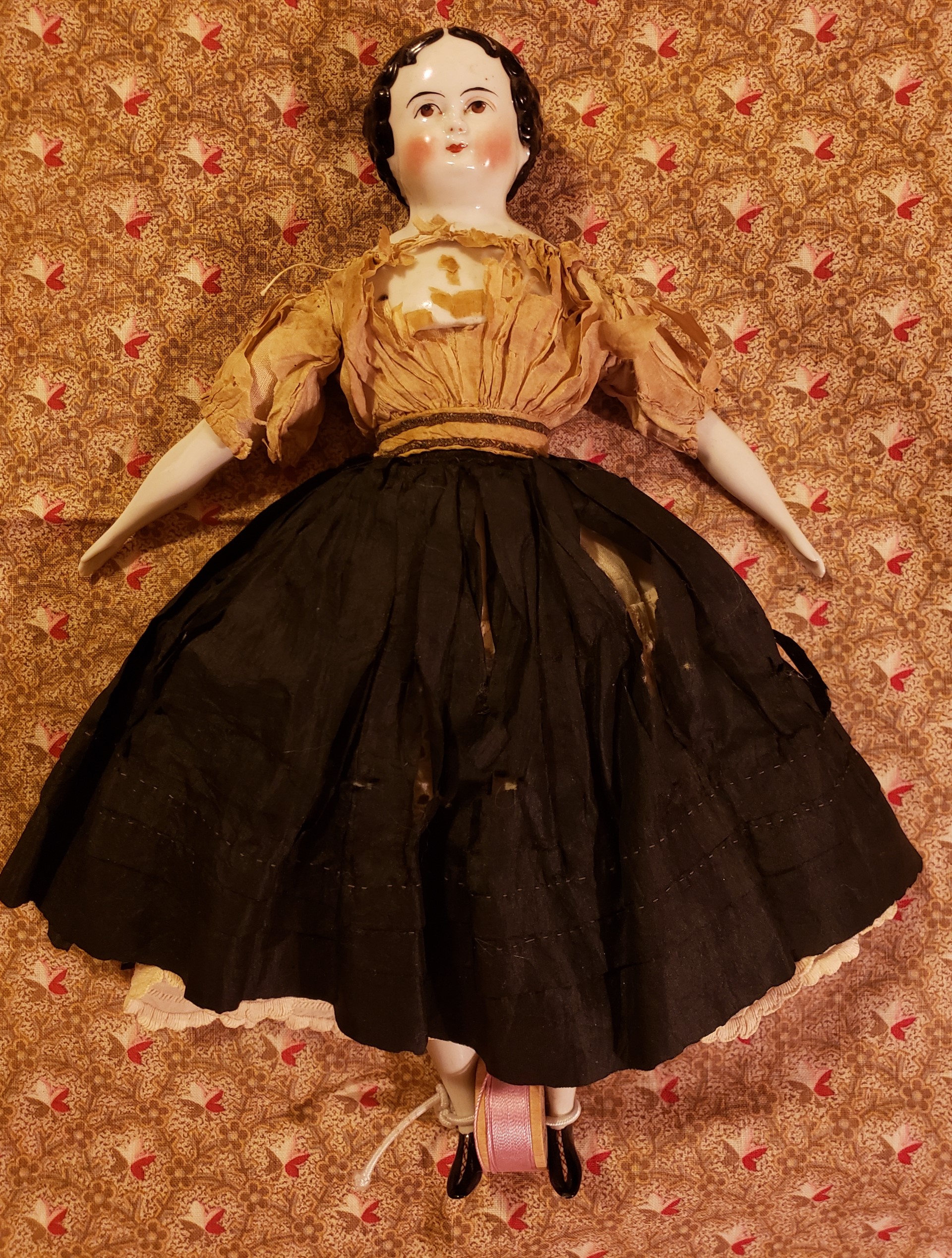
Many of the dolls that I find for my collection need redressing. Some are in inappropriate dresses for their age and size, have clothing that is falling apart, were re-dressed in polyester and nylon circa 1970’s, or have only underclothing, or no clothing at all. This little treasure of a doll was listed as “all original” because her old silk dress that is melting was sewn closed in the back and could not be removed without cutting the stitches. I knew, though, that the shoulder-head dates to about 1850, and it is obvious that the body is much newer, and the arms and legs do not match the age of the head. Another clue that the dress is not as old as the doll head is the fact that the silk is badly melting. While I don’t have dates, I have recently learned that earlier silks, as in early to mid 19th century, hold up much better than later silks that are now treated with chemical finishes containing acids that eventually harm the fabric. So, if the dress on this doll was contemporary to her, it would not have deteriorated as this one has.
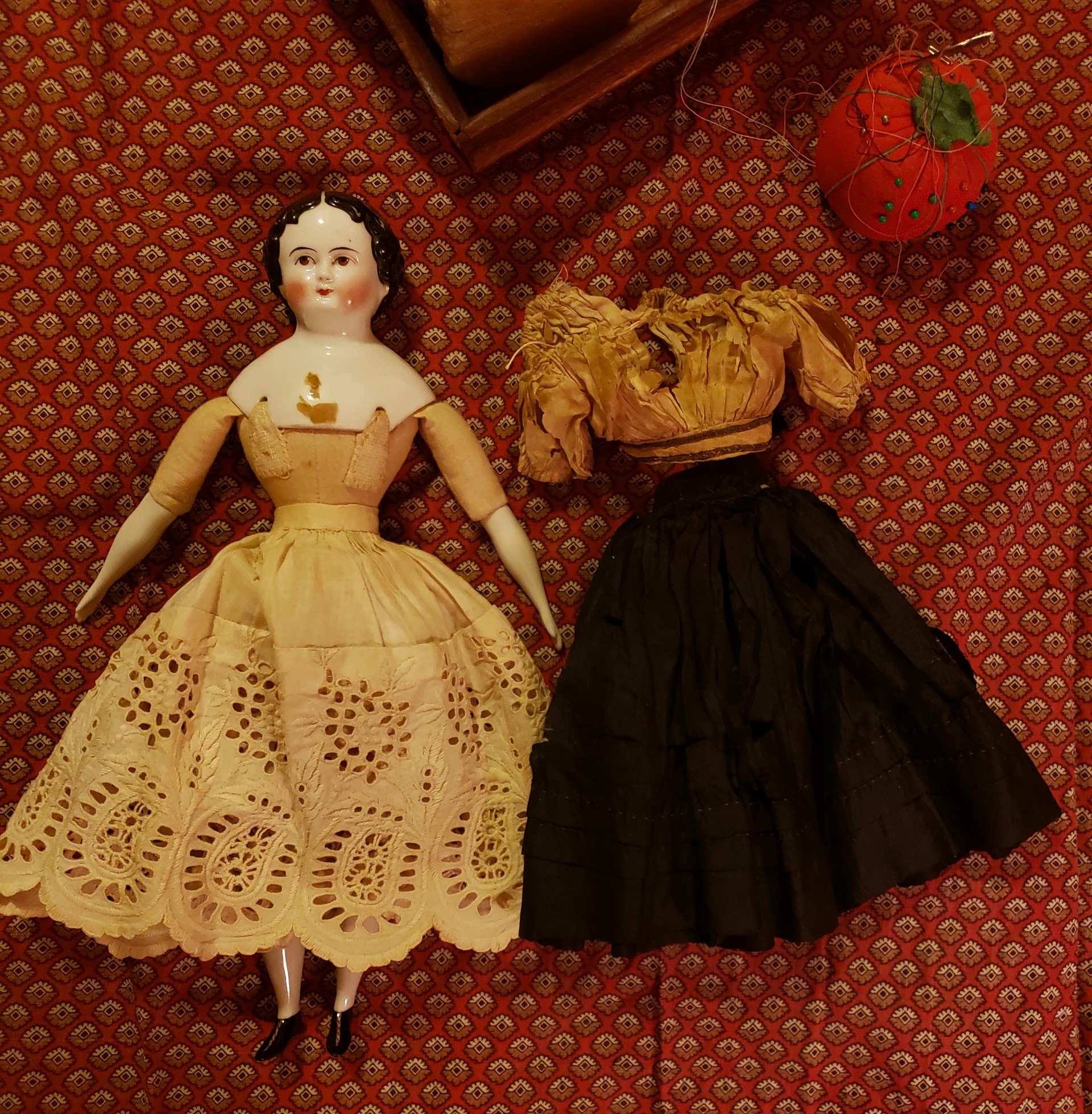
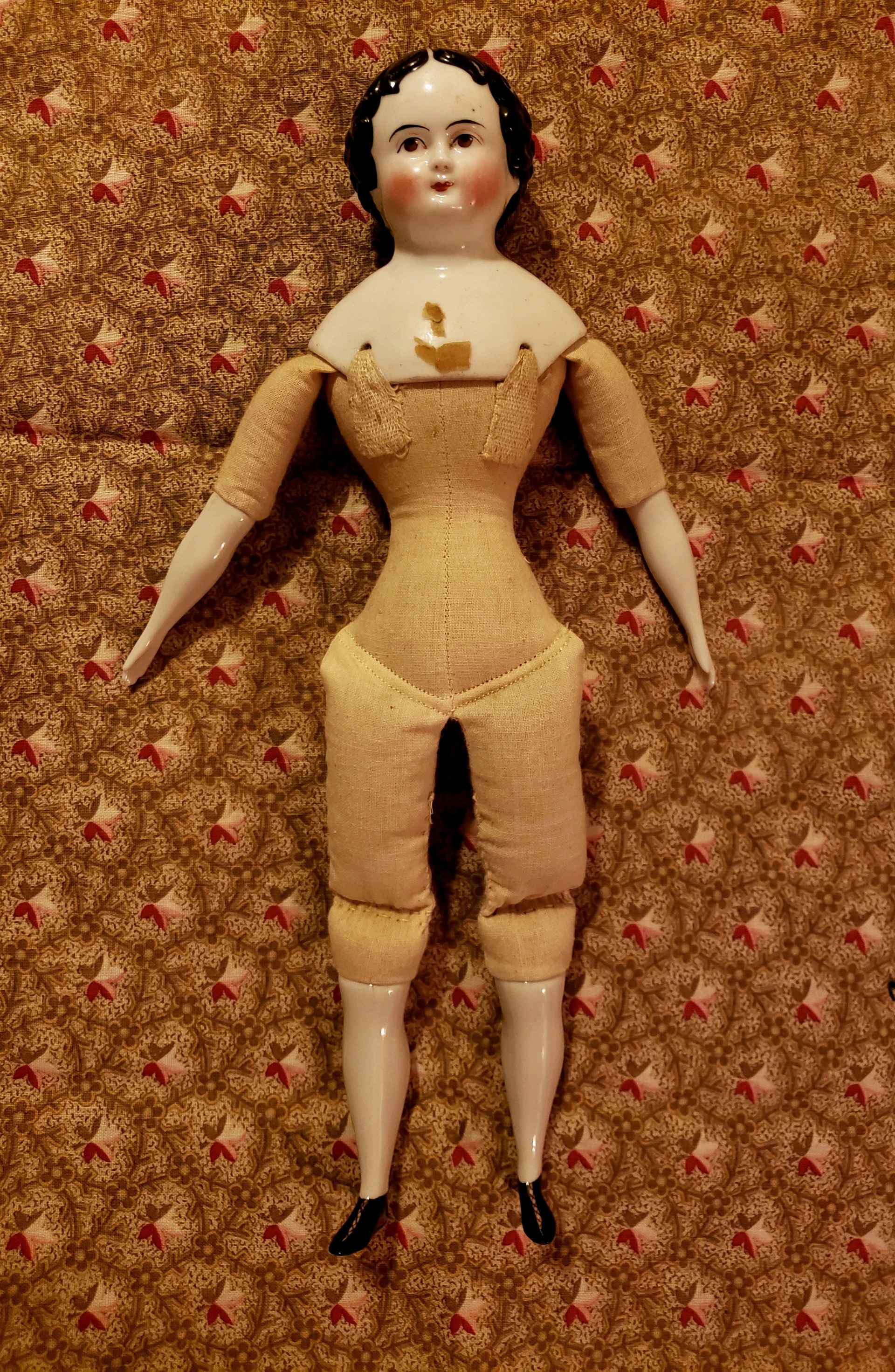
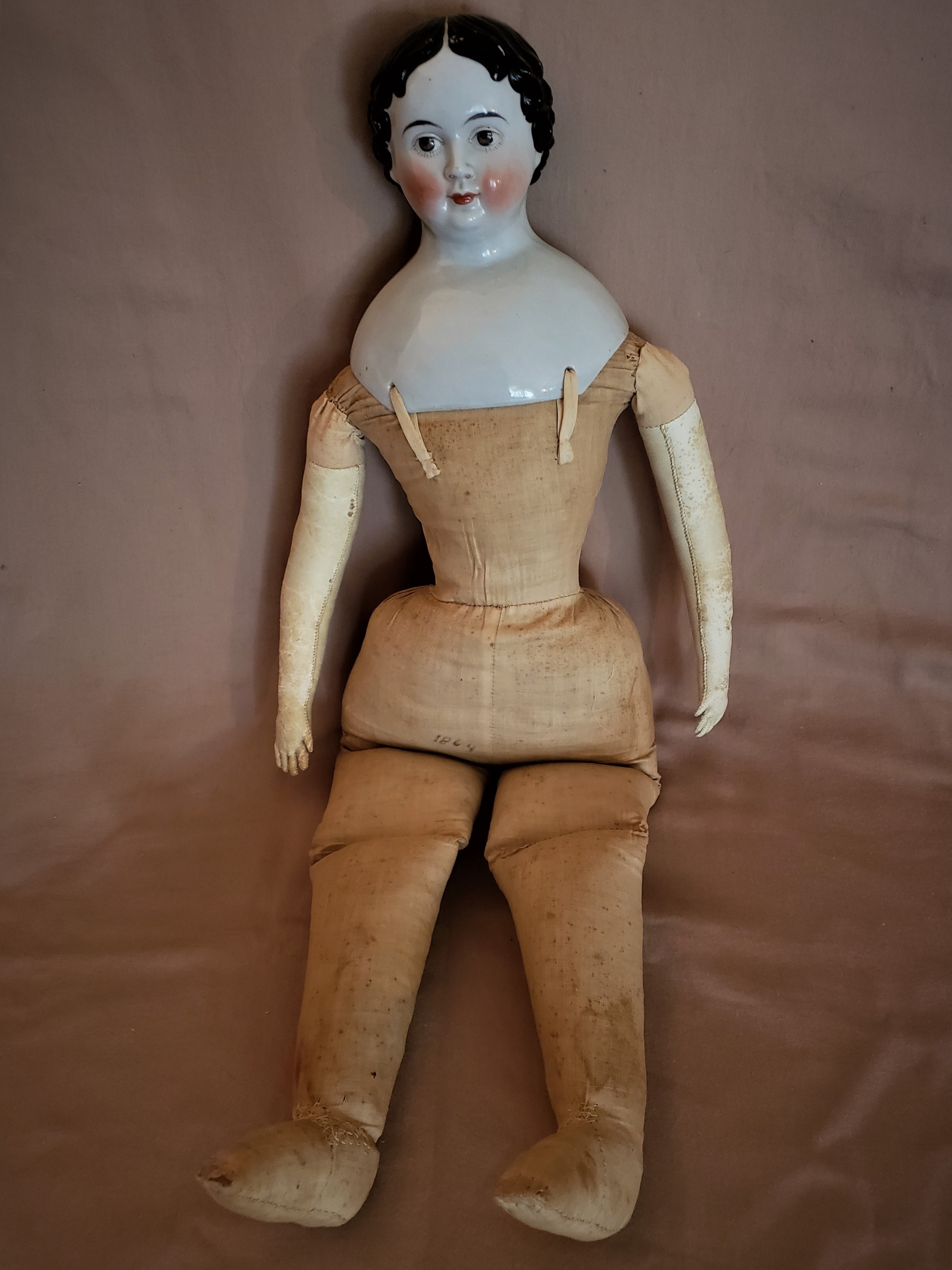
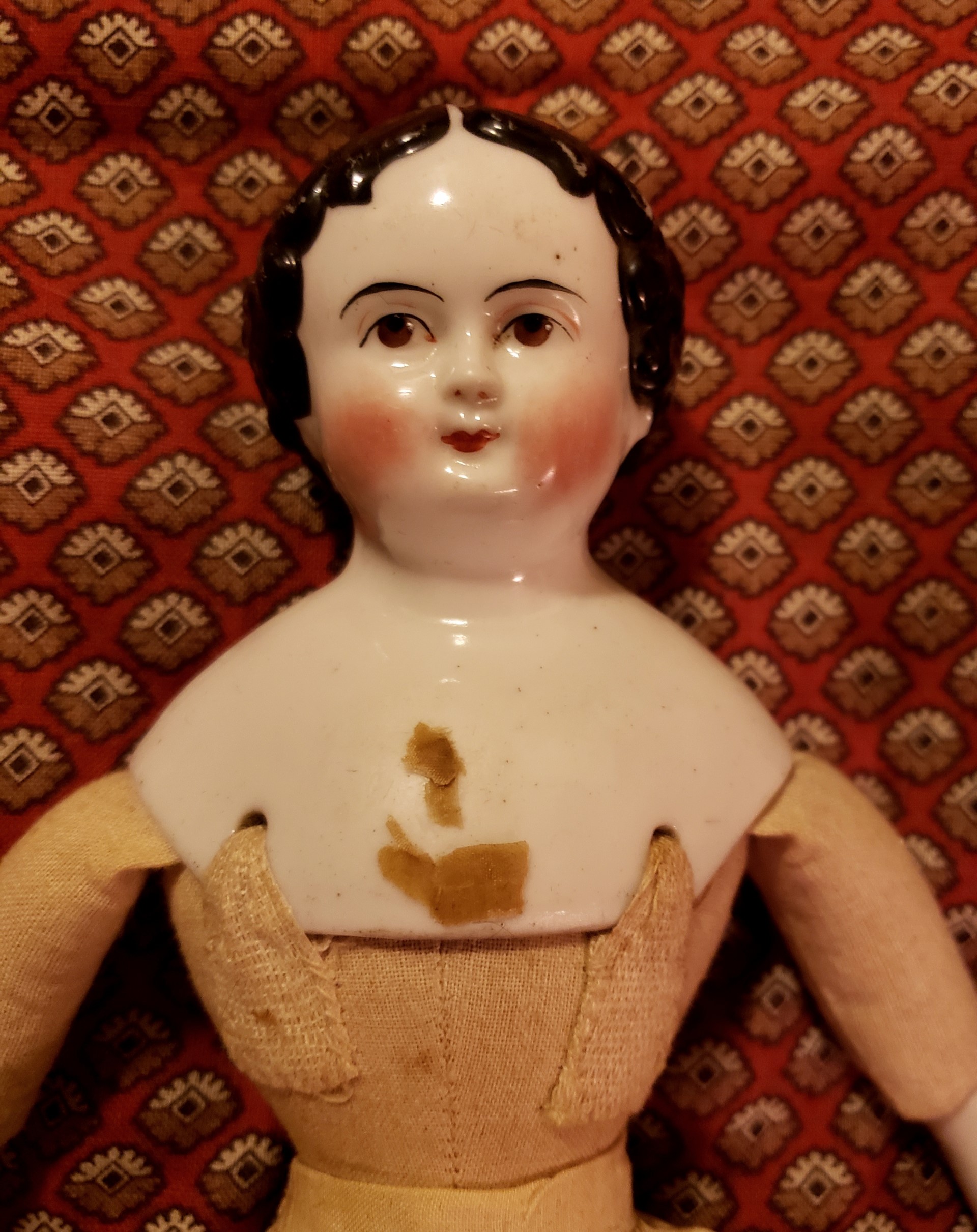
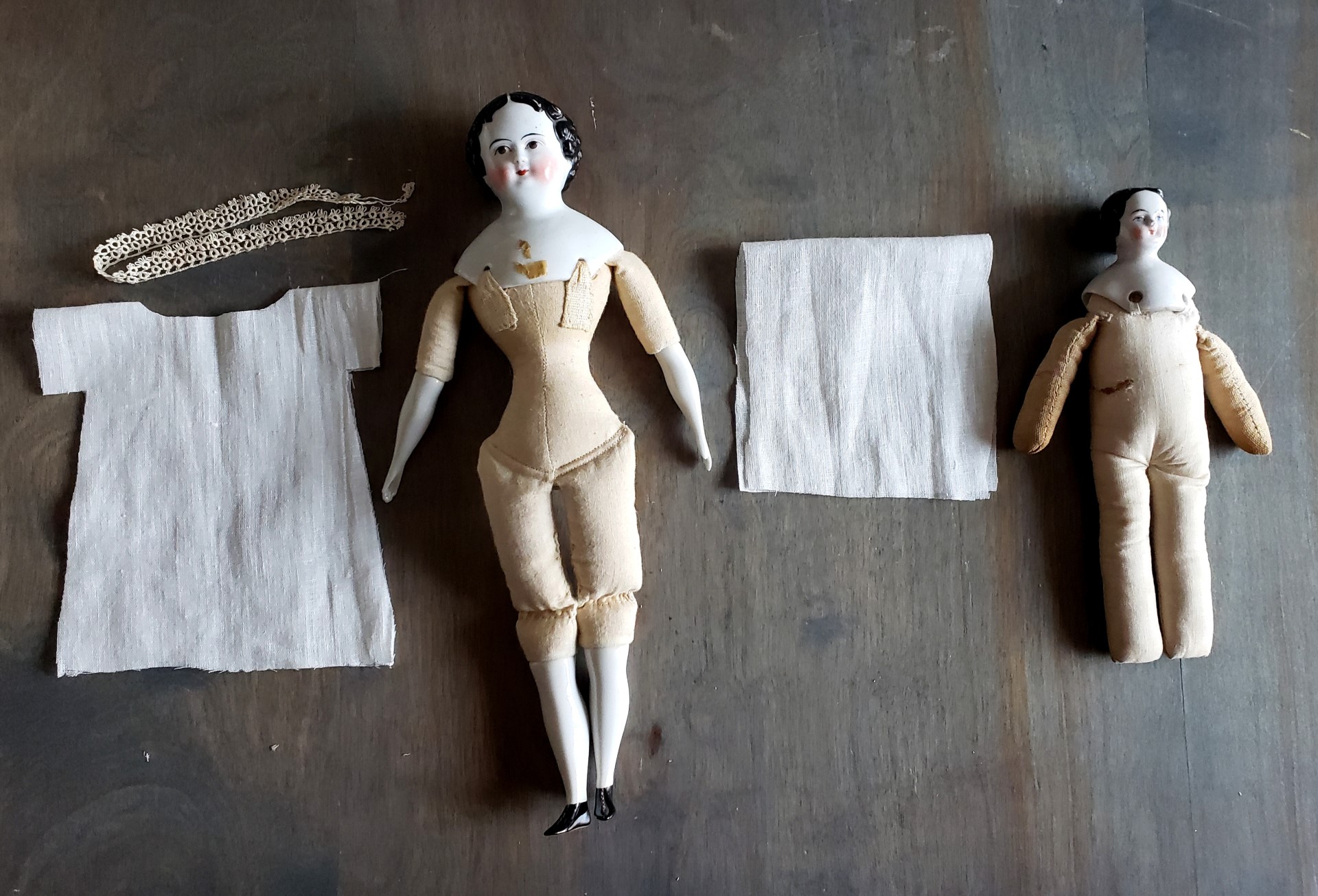
The first step in constructing a new garment for a doll is to complete her undergarments, or small clothes. This style of chemise, folded at the shoulders and cut to fit over the doll’s head, is one I use for many of my dolls who arrive without one. The chemise is typically embellished only at the neckline, perhaps at the sleeves, because the hemline is hidden under the petticoat. In keeping with sewing techniques comtemporary with the doll’s age, and for her small size, all of the sewing for her outfit is by hand with a needle and waxed thread.
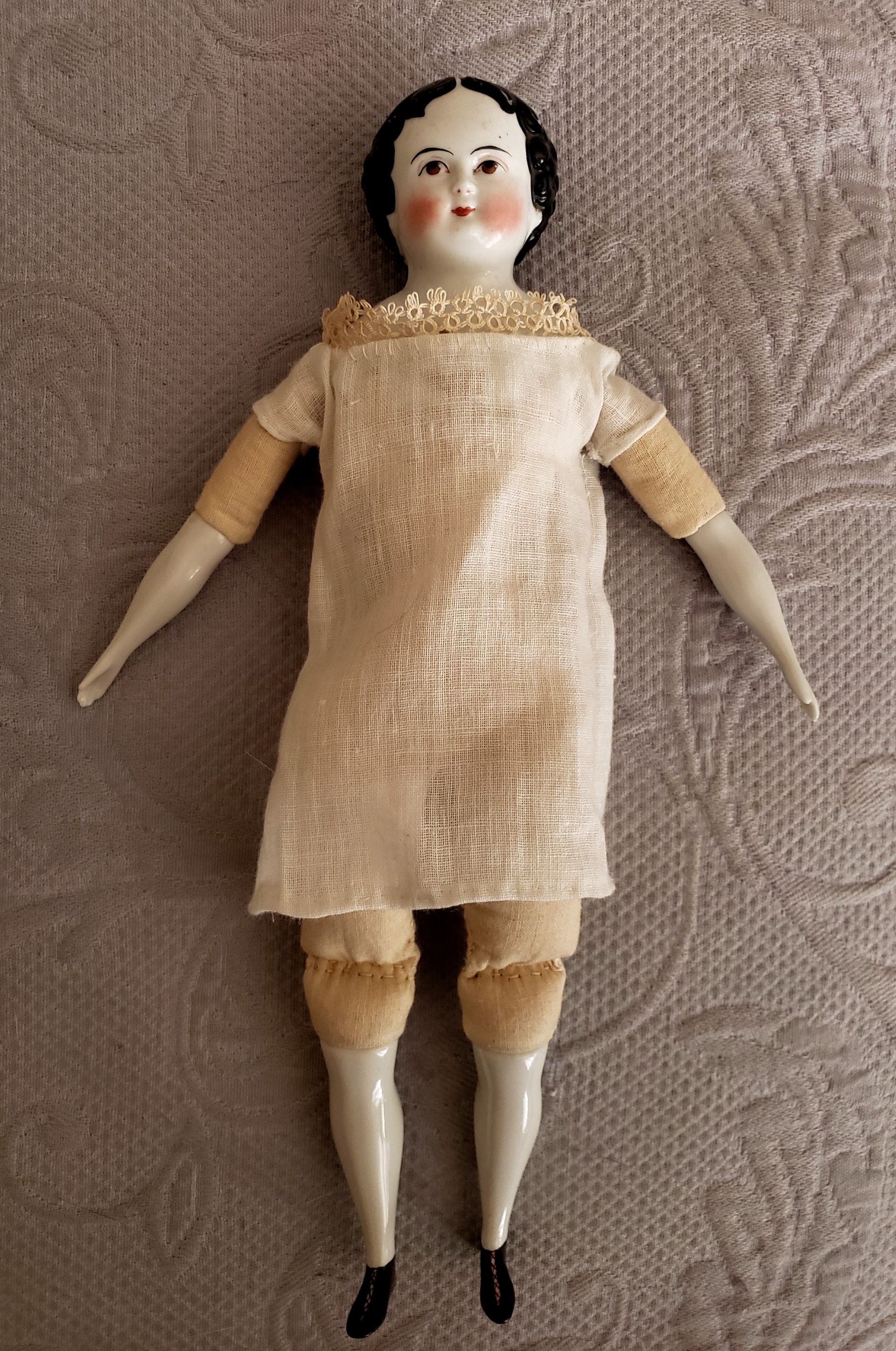

Now the doll is ready for a dress! I have several pieces of colorful antique calico that I have been itching to use. I wanted to use the bright yellow fabric in the photo above, under the doll’s undressed body, but my dolls have a way of choosing their own fabric, and it’s not always the one I originally wanted! So this little brown-eyed wren chose the rust red print fabric for her dress.
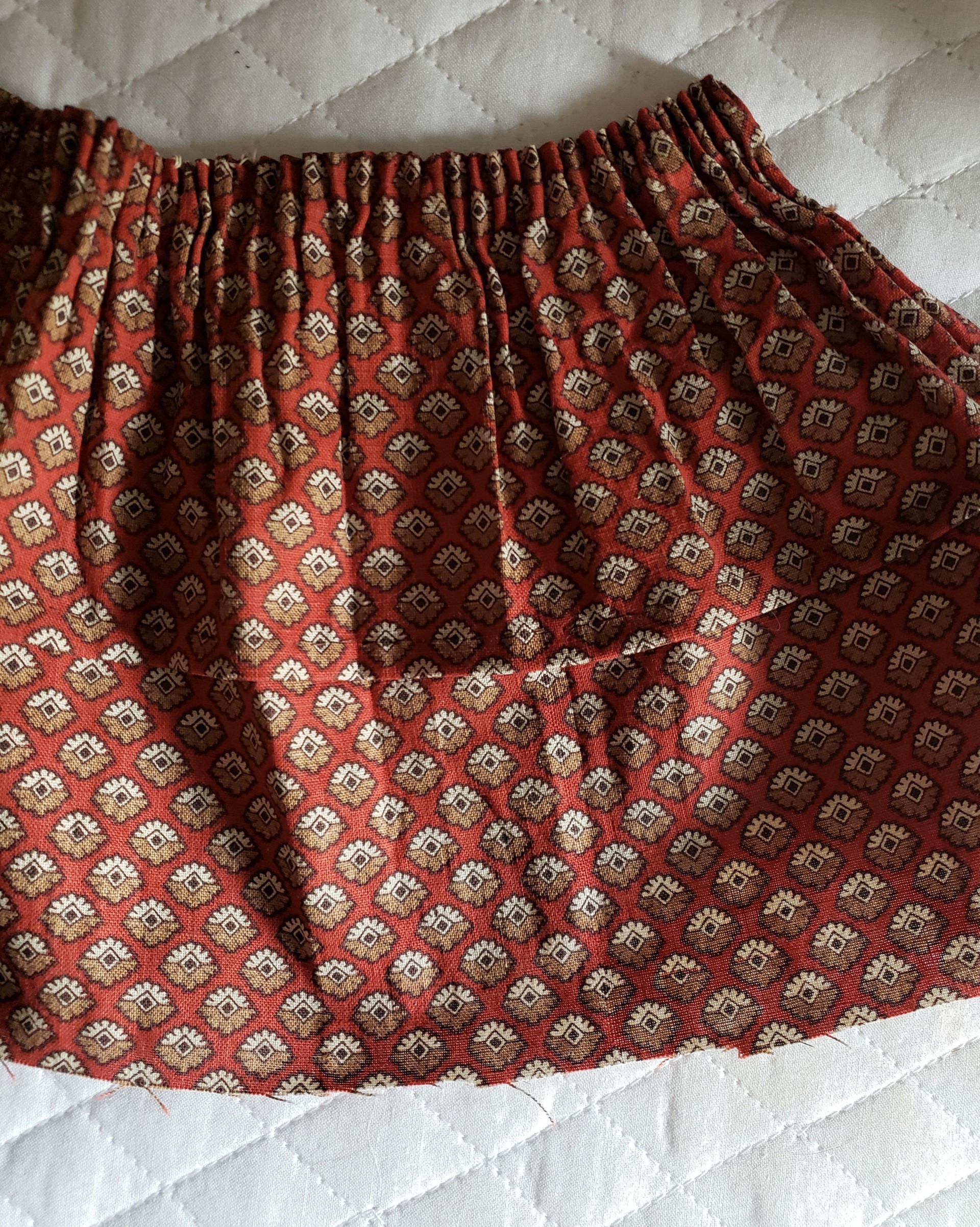
This print fabric is special and deserves reverence for its previous life. It used to be a lady’s skirt, and must have served her well with day to day use and wear. Did she have brown eyes too, that were set to shining with the contrasting backdrop of this intriguing print? The fabric is slightly brittle with age and as happens especially with the natural brown dyes, yet it is still servicable for this little doll who won’t be playing too hard in it. I fashioned the little dress in the typical no-pattern way that many little girls’ dresses were made in the 1800’s. The circumference of the skirt was determinded from that of the petticoat; it is quite full!
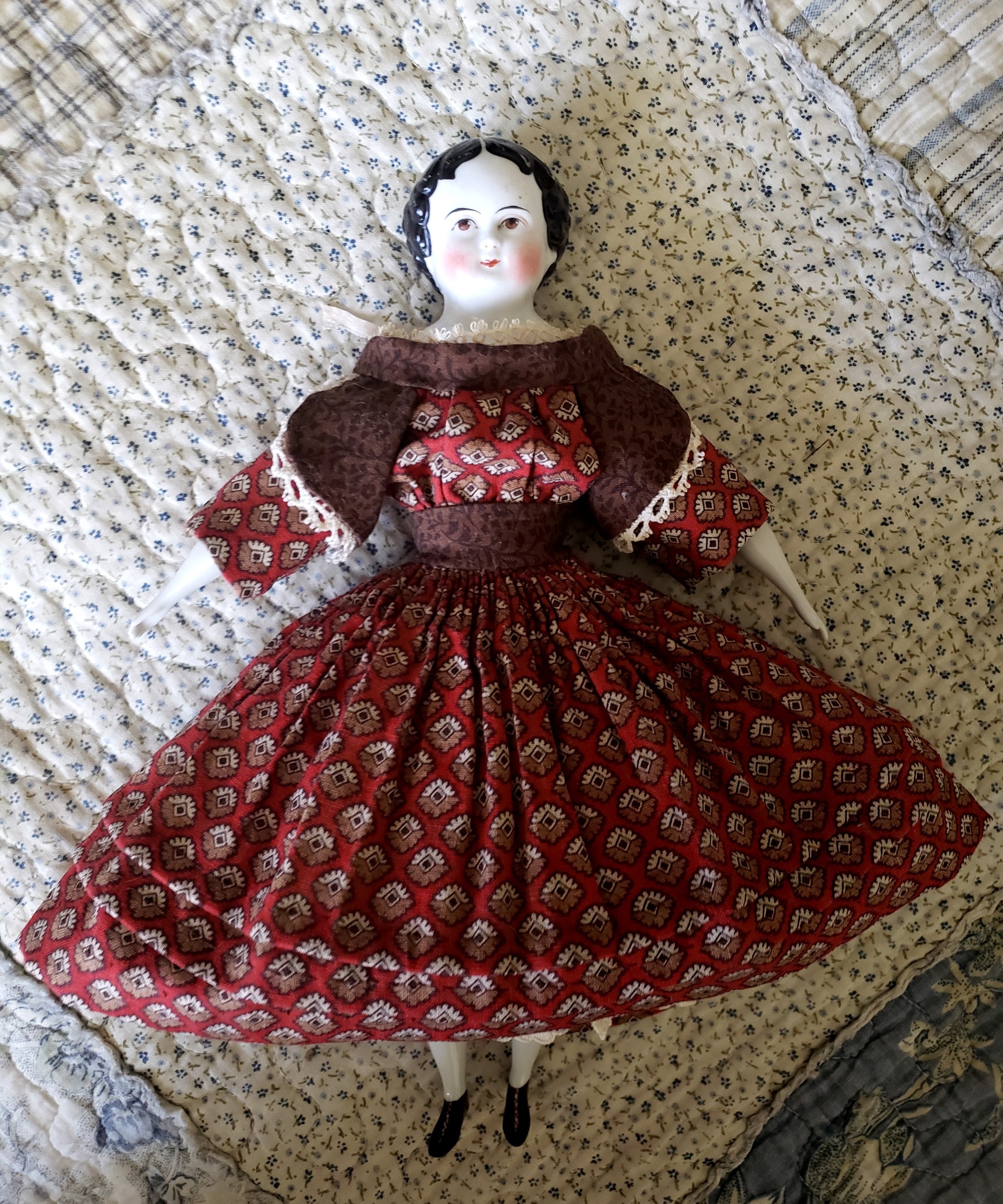
The dress has contrasting waist and neckbands, and also sleeve caps, of vintage brown calico. The skirt has two growth tucks near the hem, and the chemise’s tatted lace shows at the neckline.
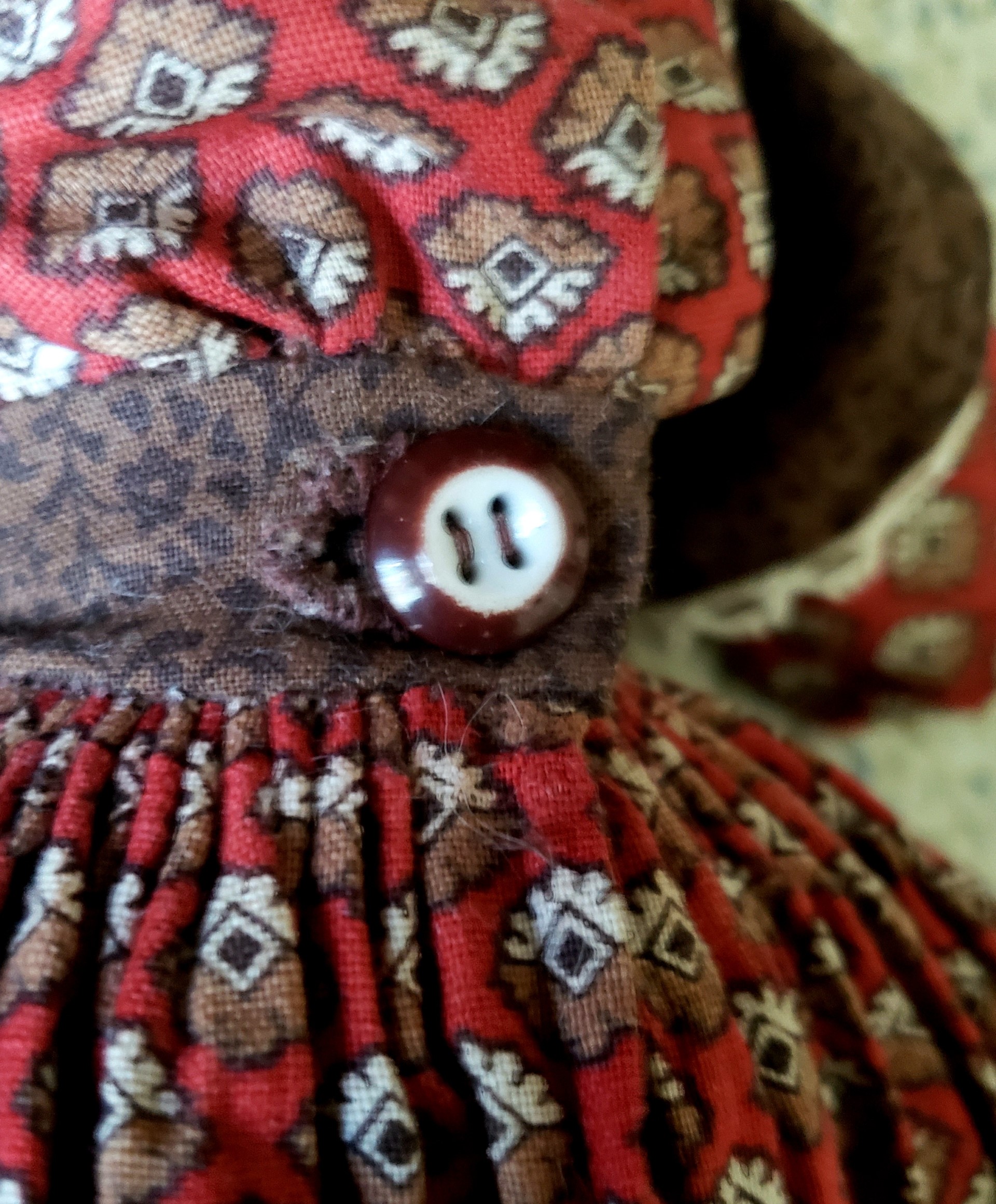
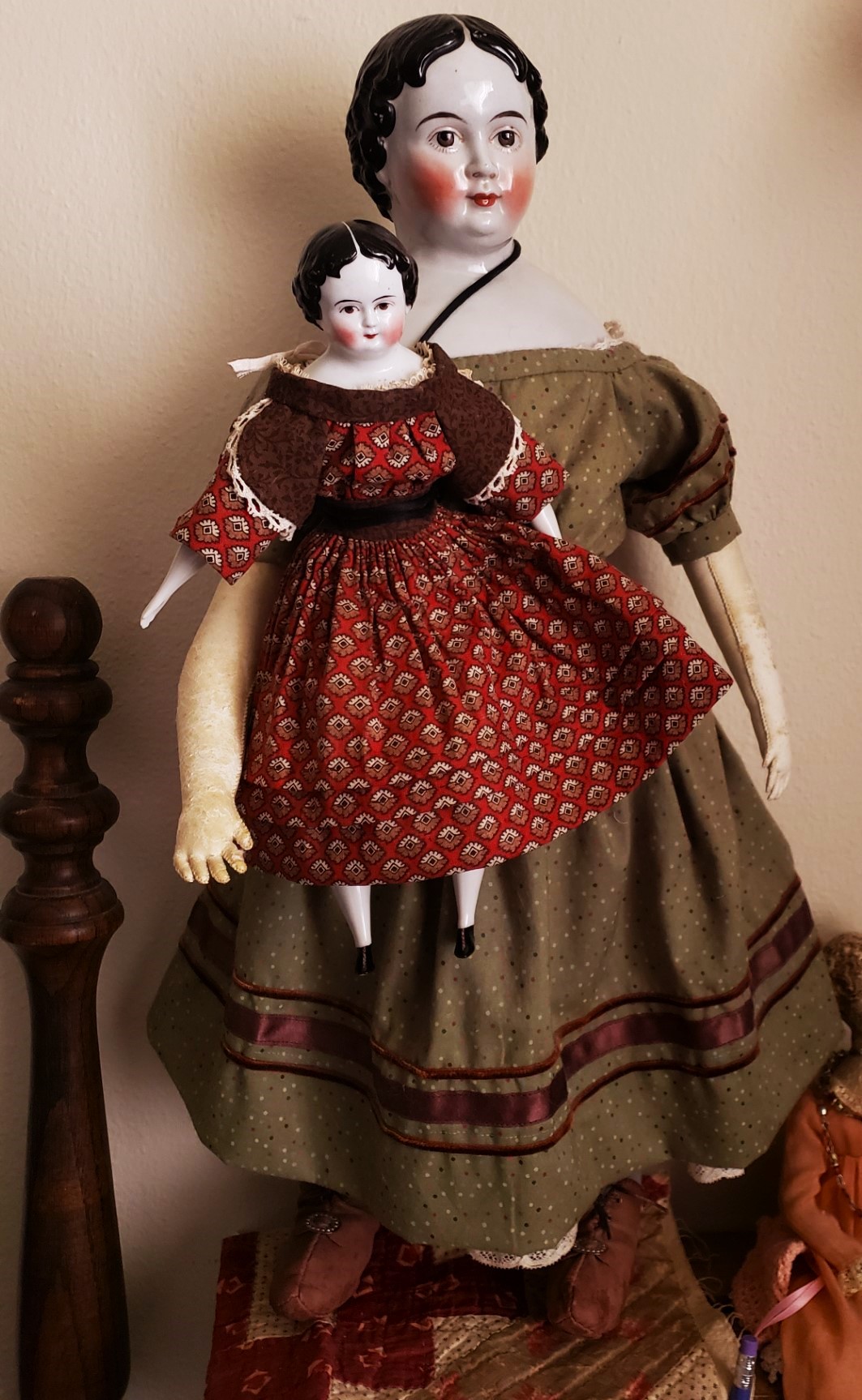
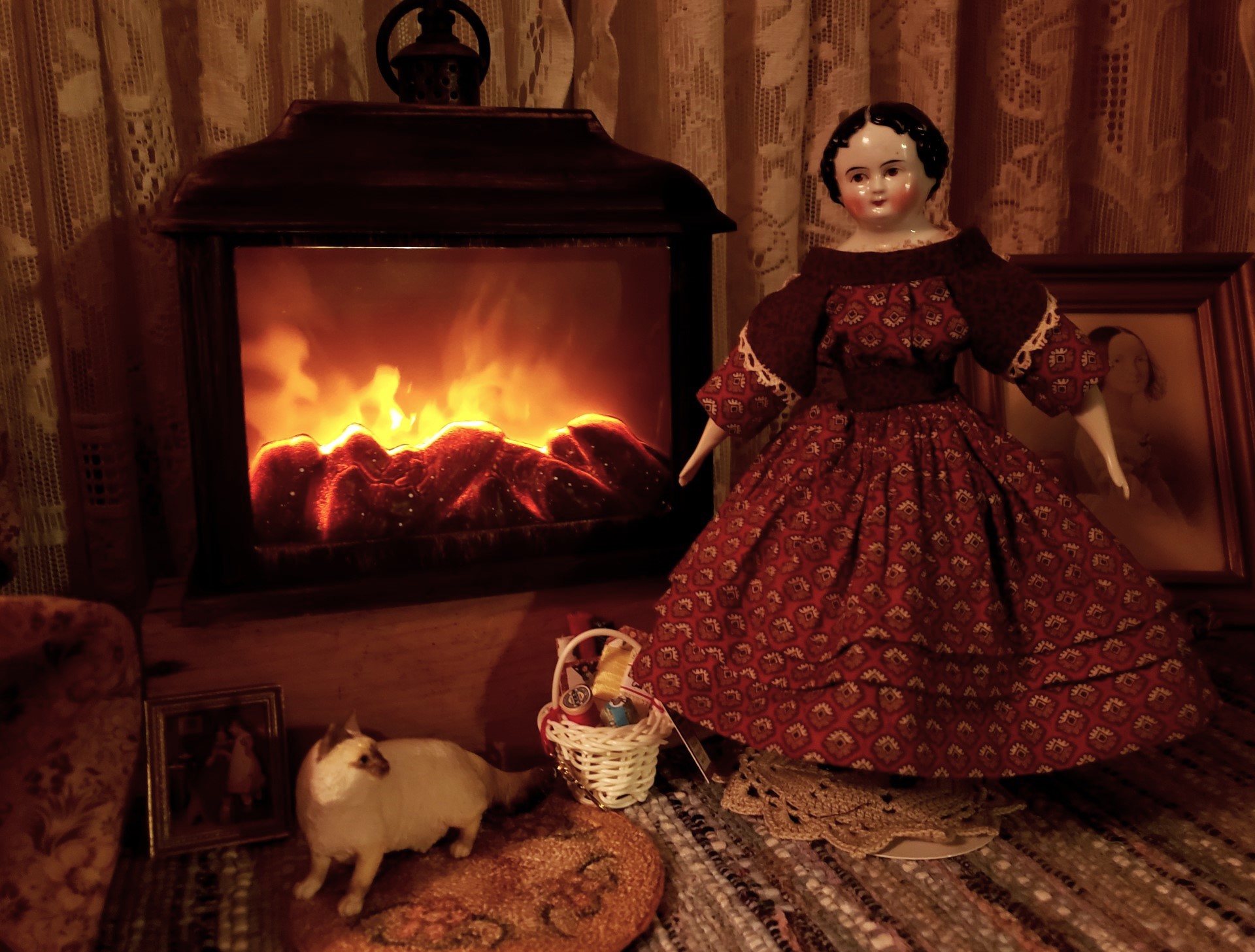
An old doll can certainly gain a new beauty with restoration and appropriate clothing. Sometimes the right antique dress can be found. Sometimes the original dress in poor condition can be copied for a new one to be made. And sometimes, a new dress in old calico with just the right color and print brings an old doll “alive” again! With reverence, skill, and knowledge of the materials and of the old ways, creating something beautiful from the antique material brings the soul of the original garment to life again, too.
